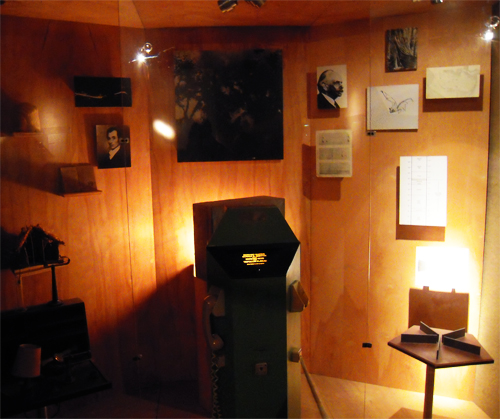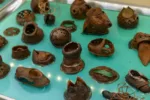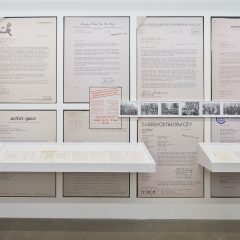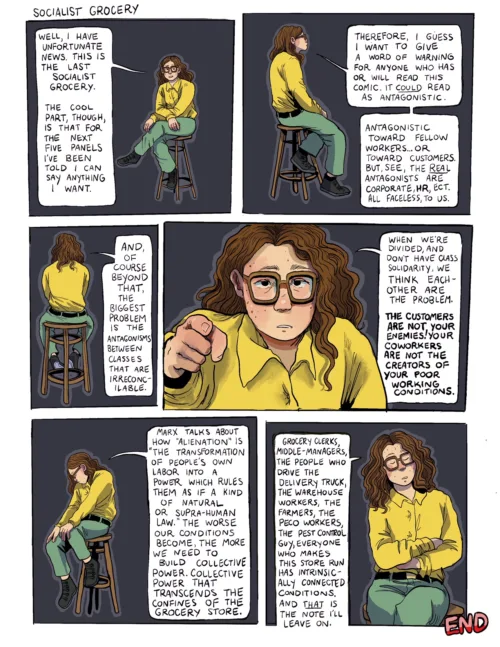It’s unlikely, if you’ve never been to the Museum of Jurassic Technology in Los Angeles, that I’d be able to adequately catch you up to speed in a single post. Hell, even if you had been there— and felt, like I did, that you’d found your new favorite thing in the universe— it still might get a little confusing.
As straightforwardly as I can break it down: the Jurassic, brainchild of eminent scholar David Wilson, has for twenty some years housed a collection of arcane and fantastical phenomena from the shelves of natural history and natural philosophy. And as the visitor soon realizes, it does far more than simply display them. With an artfulness and care rarely seen on Venice Boulevard— or, for that matter, in contemporary life— Wilson and museum staff present and represent their objects of study with such aching Beauty, that even after drinking them in for hours, the visitor still thirsts for more and returns home with a serious case of “archive fever.”
Enter its darkness and the mind instantly begins to dilate. Adjust to its pace. Listen through phone receivers to drawn-out deliveries about man-made precious gems. Turn the corner and watch a 3-D nickelodeon expound on new learning in the Renaissance, in simultaneous German and English. Peer under the lens at micromosaic floral arrangements and microscopic sculptures of Disney characters carved from human hair. Read of the arduous journey of a clan of scientists on the trail of the stink ant of Cameroon and the deprong mori. Or, enjoy the suggestive cases of denigrated folk-remedies that might— the museum hopes— hold that same critical kernel of efficacy that led Fleming to the miracle of penicillin. Finally, after hours spent below, join museum staff upstairs for tea and cookies and regain your equilibrium… A perfect Thursday afternoon.
Before long, it becomes pretty evident that some percentage of the plaques, artifacts, exhibits, and references are, shall we say, “mythologized” or “mythologizing.” Not false, not imaginary, and certainly not misleading, but slightly mythic or placed in just the right flickering candlelight, so that the visitor comes to an even deeper appreciation of the natural world.
Lawrence Weschler, in his charming treatment, Mr. Wilson’s Cabinet of Wonder, sees the Jurassic in continuum with the Wunderkammern, or cabinets of curiosities, of the Renaissance. These precursors to the modern museum were usually large rooms stuffed silly with all manner of specimen, rarity, hoax, and technological innovation–the kind of place where human horns, miniature still-lifes, and perpetual motion machines could share equal stagetime without any overarching theme. As Weschler notes, their sense of plethora surely arose out of that sudden widening of the Renaissance worldview. Just as knowledge had begun to spread with the Gutenberg press and the migrations of the plague, its domain suddenly doubled with the discovery of the New World. Europe found itself deluged with weird shit from previously unknown lands, and was, as Weschler says, constantly having its “mind blown.”
Some of these collections were owned by monarchs, like Rudolph II or Charles I of England, eager to flaunt their mastery of the cosmos with the ownership of a microcosmos. Others were put to nobler purposes and used to spur some of the greatest thinking of the day, such as the collection of Athanasius Kircher, Jesuit scholar and darling of the Jurassic.
The introductory video, to the visitor’s immediate left, had a bit more to add on the placement of the Jurassic among its predecessors. After some words on the origins of museums, from Noah’s Ark to those haphazard collections of Renaissance élites, the video peaks in praise of the Philadelphian painter and naturalist, Charles Willson Peale. Peale opened the first truly public museum— for every man, woman, and child— in the magnanimous mode of “rational amusement.”

“Peale fervently believed,” the video continues, “that teaching is a sublime ministry inseparable from human happiness, and that the learner must be led always from familiar objects toward the unfamiliar – guided along, as it were, a chain of flowers into the mysteries of life.” It is from this period, this spirit, claims the video, that the Jurassic draws its energies.
My take on the Museum of Jurassic Technology stems from these genealogies. We know that, with the discovery of the New World and the recovery of Antiquity, there was an explosion in the possible objects of human knowledge, but the bigger questions were how Europe was organizing all these new thoughts and discoveries; how it was coping with this messy glut of new data. If we’re to believe the line that Foucault tells us in The Order of Things, the humanism of the age envisioned the world as a boundless web of meaningful resemblances, in whose infinite variety Man could dare to read the “prose of the world,” presumably authored by the Almighty. By hints and signatures— by signs and portents— Man could spot hidden roots and match the similitudes between distant realms, and so by doing, approach the divine interpretation of things.
As Foucault says, “The face of the world is covered with blazons, with characters, with ciphers and obscure words— with ‘hieroglyphics,’ as Turner called them. And the space inhabited by immediate resemblances becomes like a vast open book; it bristles with written signs; every page is seen to be filled with strange figures that intertwine and in some places repeat themselves. All that remains is to decipher them.”
Central to the thought of this epic, to its episteme, is the figure of the microcosm. The careful observer could use the microcosm as a kind of decoder-ring, by diligently noting connections within his microcosm that might also be playing out elsewhere, on other levels. And this is precisely how Athanasius Kircher put his little microcosm— his Wunderkammer— to work for him. Unlike the collections of the bloated monarchs, Kircher actually took a stab at their underlying meaning. Infact, Kircher epitomized this hermeneutic approach to knowledge more than nearly anybody else. Look over his life’s work: Egyptian hieroglyphics, Noah’s Ark and biblical exegesis, fossils, the discovery of microorganisms, and clocks built on the principle of magnetism. It just screams “Renaissance hermeticism,” doesn’t it?
Somewhere around this time, however, in Europe, all the categories of thought underwent some serious shape-shifting. Perhaps the overwhelming variety was starting to get to them. The “plethoric yet absolutely poverty-stricken character of this knowledge,” as Foucault puts it, was not getting to the bottom of things as hoped and a new ordering was quickly becoming necessary. Things needed to be sieved, reduced, and economized to make it readily digested by the human mind… Enter Newton and Descartes.
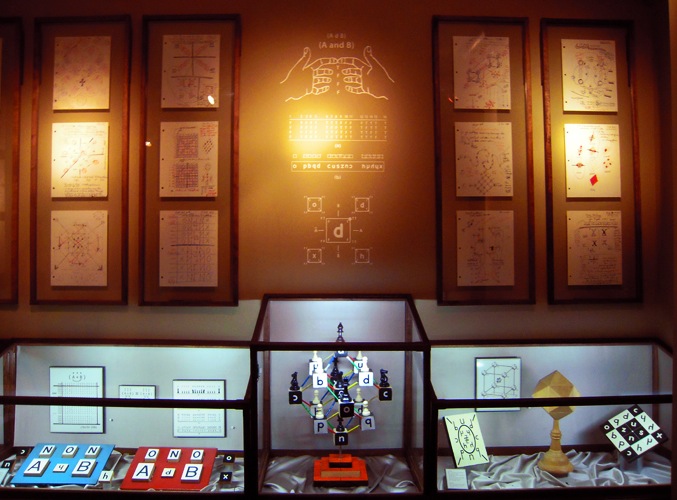
It is this change in European thought that the Jurassic swoops in to address, even if it sounds a little bombastic to say so. This is the era in which, lamentably, the poets and the natural philosophers begin to part ways. Prior to the rationalism of the Classical Age, figures like the Jesuit Kircher might not have been content to merely prove the truth or universality of a scientific claim, it was just as important to explain its significance, usually by weaving it into the Christian picture of things.
What Mankind needed badly during this crisis were some really outstanding poets and meaning-makers who could absorb the discoveries of science and then phrase them in a such a way, that they instilled in us proper marvel and deeper meaning. Kircher would count as one of these meaning-makers. Another was the great Renaissance martyr Giordano Bruno. Bruno was one of the first to openly defend the heliocentric theories of Copernicus, even before Copernicus himself, who meekly offered it to the world simply as a “mathematical expediency.” Bruno went much further, however, and leapt to the conclusion that this solar system of Copernicus was only one of an infinite number of worlds, presaging our current cosmological picture. In these worlds, Bruno claimed, God was eagerly allowing every possibility, every kind of people, every custom, and every morality, to play out. Bruno was no scientist, though, and often embarrassed himself in public debate with his half-baked quasi-scientific discourses. Instead, he arrived at his defenses poetically and was, in many of his rhapsodic writings and ramblings, often poeticizing new science to the point of religious ecstasy.

I see the Museum of Jurassic Technology as performing the same task. The motto of the museum says it all: Ut translatio Natura— “Nature as Metaphor.” It’s not enough, as science and science museums often do, to simply showcase science under glass as fact and law, in some agreed-upon order. In their presentations, representations, and formulations, the museum can and should phrase its phenomena— from bat echolocation to theories of memory— in a form poetic enough to stir the viewer or visitor into near-mystical oscillations. It’s not just what but how the stuff is said.
Perusing the exhibit on the interwined lives of neurobiologist Sonnabend and amnesiac singer Madelena Delani, for instance, with its startling picture of memory and forgetting, we are not just learning some new fact to stick in our caps, we are exposing our very categories to rewrite and metaphysical somersault. Which is why the exact percentage of poetic license that Mr. Wilson and museum staff take with their representations matters so little to me, especially with lesser-known phenomena that I would never have seen anyways. This license— the obscure references, deadpan anachronisms, occasional retreat into Latin and German, scattered portions of joshing and invention— is supposed to defamiliarize rather than familiarize… A revelation not just of facts or laws, but of their true, uncanny character.

Weschler describes the Jurassic as demonstrating “the premodern wellsprings of the postmodern temperament,” and even if you are unsure of these terms, you still get the drift: the museum marks the revenge of meaning after it was downplayed out of modern science in the Classical and Enlightenment Age. Refreshingly, the Jurassic does not do this by belittling or disavowing science, like many pre- and postmoderns, but by providing a much-needed supplement that has been left out in the rush of Western rationalism.
The exhibit The Lives of Perfect Creatures serves as a perfect example. It is a portrait gallery of all the dogs sent into space by the Soviet space program, beginning with Laika, the very first Earthling ever to enter and perish in outerspace. The gallery has enshrined a very singular act in the annals of human history. Here we were, with centuries of science and technological progress coming to a head, with the great geopolitical powers eager to show off their entry into the Space Age, and what do we do? We offer a sacrifice— and a sacrifice of the innocent, no less. Only with the blood of Laika and a dozen-so other little doggies was outerspace made safe for human trespass; only by offering these “perfect creatures” was Man in his profaneness allowed to enter this sacred and forbidden realm. Goes to show: even in this most modern of all acts, we still lapse into ancestral habits in times of true crisis.
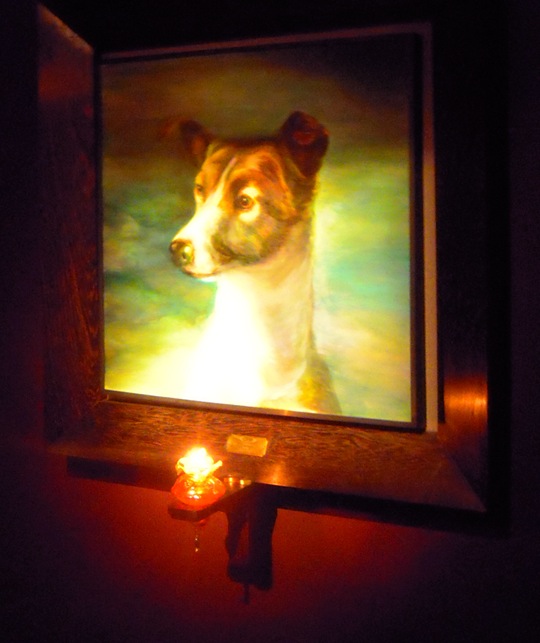
But I should probably stop here, since I’ll never get to it all. My hope is that the visitor will eventually get beyond the first and easiest concerns about its presentations— about hoax, art-historical similarities, and even self-aware museology— and spend ample time with the specifics themselves. This is the real Philosopher’s Delight. The best way to experience the shudder that the Jurassic is so damn good at delivering.
Lucky enough for any Angelenos, there are a number of public events coming up that might draw you in. Lawrence Weschler is doing some sort of spring residency thing at Occidental College, and those of you who missed his recent lecture on the Museum of Jurassic Technology can still attend his Cabinet of Marvels on April 24th. This cabinet will host none other than the man of mystery himself, David Wilson, speaking— if I got this right— on the mystical origins of the Russian space program, as well as other speakers. Otherwise, just promise me you’ll stop by the Museum next time you happen to be Westside.



